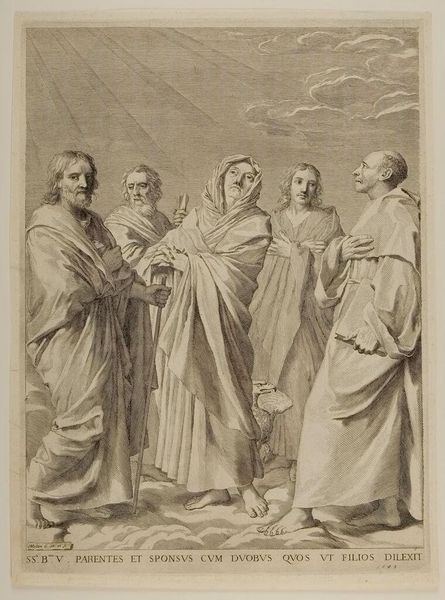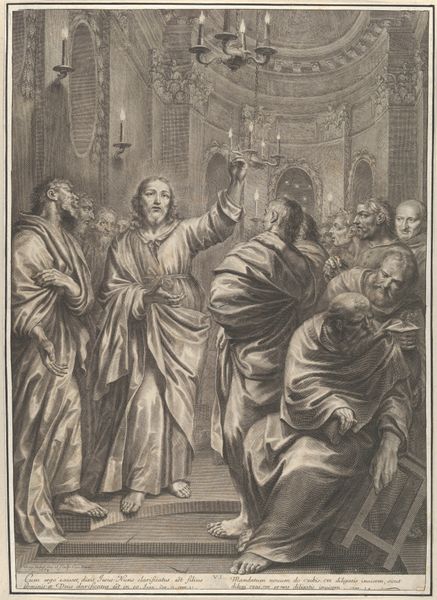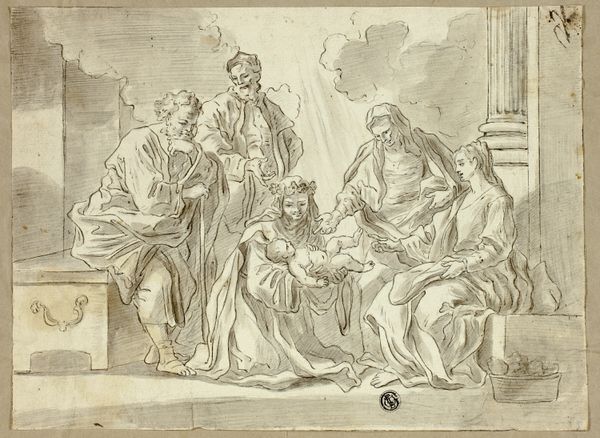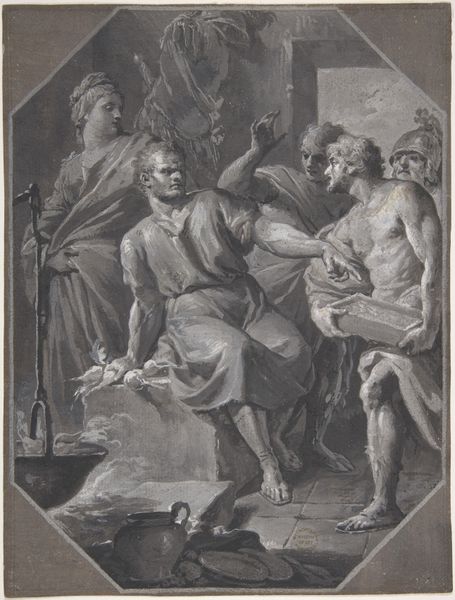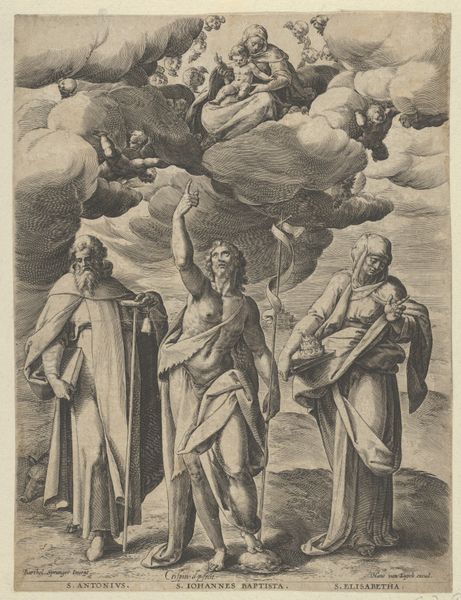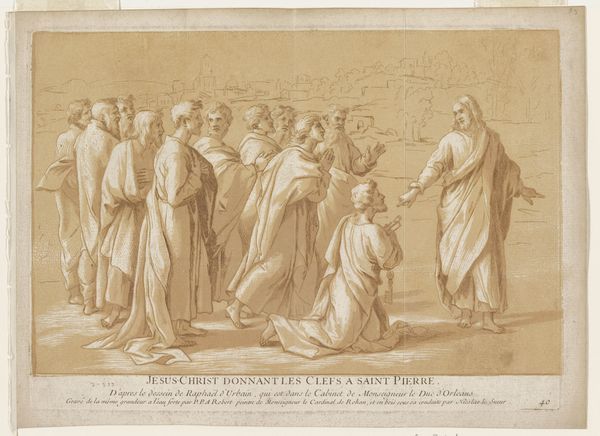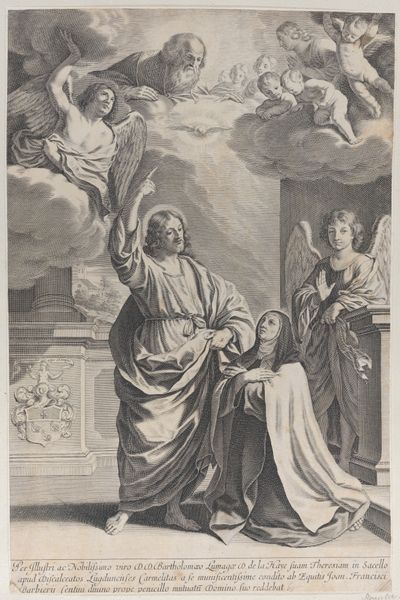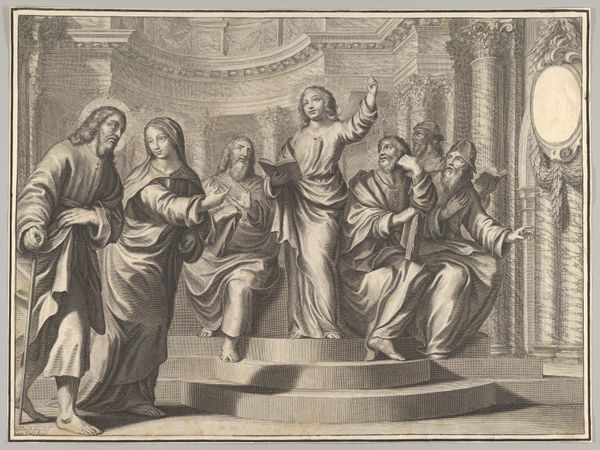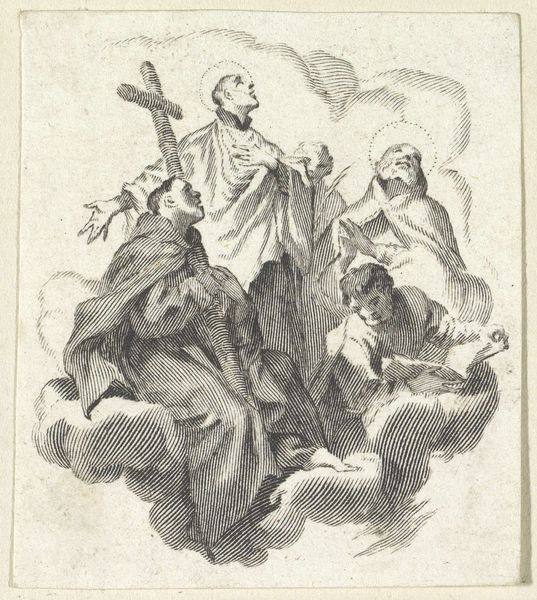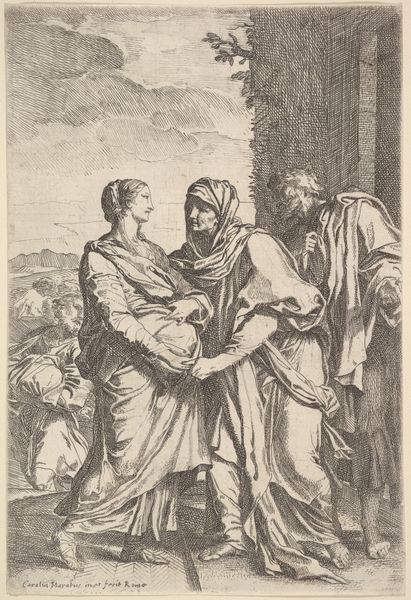
Sts. Anne, Joseph, Joachim, Bernard and John the Evangelist (Parenté de la Vierge) 1648
0:00
0:00
drawing, print, engraving
#
portrait
#
drawing
#
baroque
# print
#
figuration
#
group-portraits
#
history-painting
#
engraving
Dimensions: sheet: 16 3/4 x 12 1/8 in. (42.5 x 30.8 cm)
Copyright: Public Domain
Curator: Here we have Claude Mellan's "Sts. Anne, Joseph, Joachim, Bernard and John the Evangelist," or "Parenté de la Vierge" as it is also known, an engraving created in 1648. What's your initial take? Editor: Striking. The use of line is remarkable. There's an almost ethereal quality achieved through the density and variation of the engraved lines. Look at how they define form and create shading—it's masterful. Curator: Indeed. This piece is part of a broader visual tradition that sought to define and legitimize lineage and power through depictions of familial or ancestral relationships. Note, for example, how it links Christ's earthly family with influential saints. This says quite a bit about the social and religious currents of the time. Editor: I’m drawn to the dynamism in what seems at first glance like a static composition. Mellan coaxes volume from his subject. Notice the use of hatching and cross-hatching— it isn’t just about depiction but the relationship between line, light and shadow, creating a visual push and pull. Curator: Absolutely. The hierarchy suggested through the central positioning of St. Anne, shrouded yet exposed, signifies not only her matriarchal role, but also the Church’s evolving view of women within sacred contexts. We also need to acknowledge how Mellan manipulates historical and scriptural narratives to subtly promote specific social ideologies. Editor: I see how the light emanates, the radiating beams imply not just a divine presence, but a focus to your point on this concept of genealogy or inheritance as something illuminated and blessed. But technically, this command of engraving—using only the burin, that is to say using variations of single mark without the aid of acid—shows a unique understanding of the print medium and a departure from traditional approaches of its time. Curator: It is essential to view the artwork in the backdrop of burgeoning print culture of seventeenth century, particularly when engravings helped to create accessibility of such pieces, beyond elite circle, which often became integral components to personal and collective identities, impacting various aspects of cultural and political discourse. Editor: In short, while seemingly traditional in subject, Mellan’s virtuosity elevates the engraving beyond simple reproduction into an object of beauty and innovation, inviting a purely visual meditation on line, form, and light. Curator: And through the lens of social and cultural history, Mellan’s engraving presents complex representations of gender, power, and lineage during a pivotal moment in history, offering layers of insight into a bygone era.
Comments
No comments
Be the first to comment and join the conversation on the ultimate creative platform.
